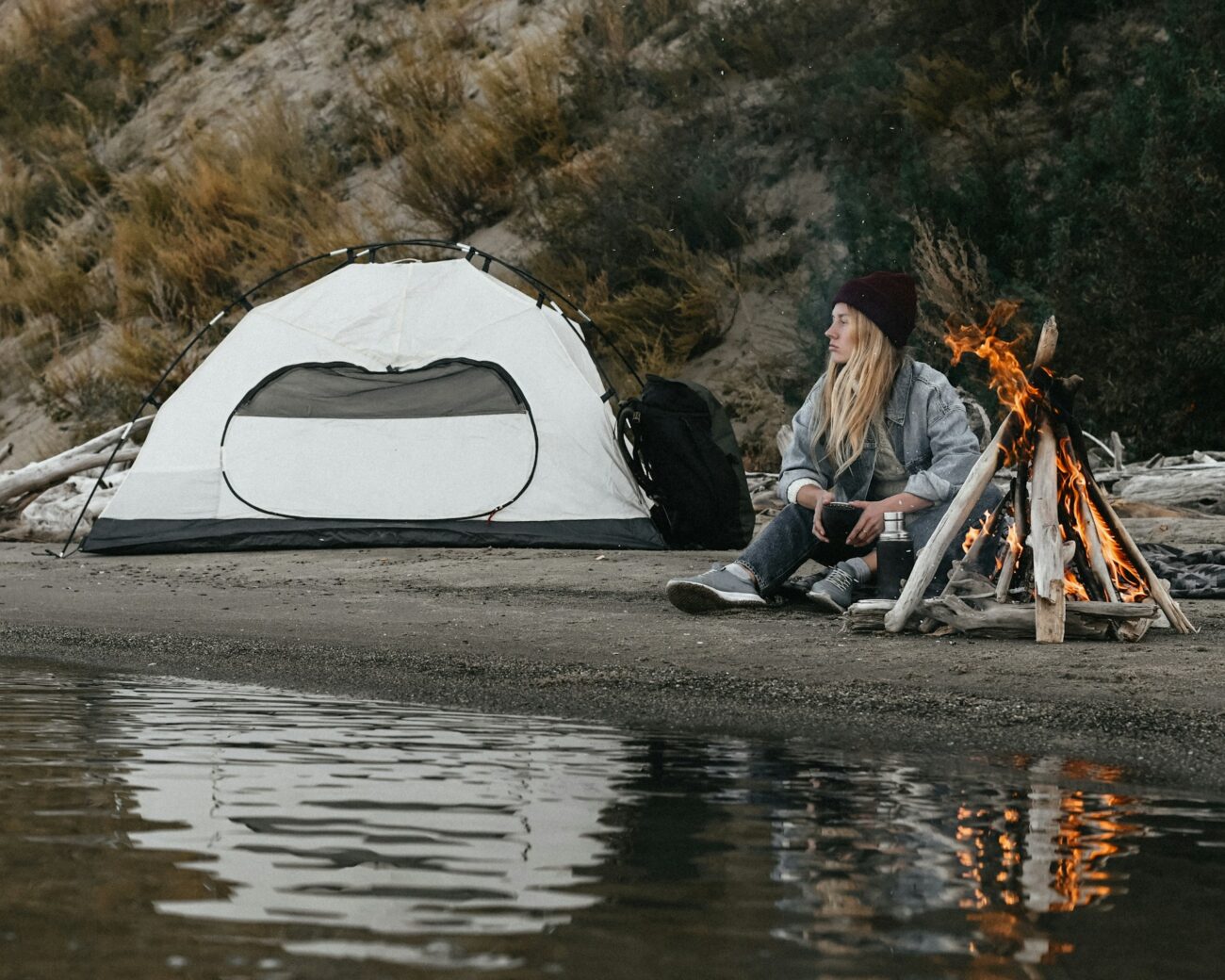Nestled alongside America’s stunning lakes are some of the country’s most breathtaking camping destinations. From the crystal-clear waters of the northeast to the expansive reservoirs of the southwest, lakeside camping offers a perfect blend of tranquility and adventure. The gentle lapping of waves against the shore provides a soothing soundtrack for starry nights, while daytime offers endless opportunities for swimming, fishing, kayaking, and hiking.
Whether you’re a seasoned outdoor enthusiast or a family looking for a memorable vacation spot, these 15 lakeside camping destinations across the United States promise unforgettable experiences amid nature’s splendor. Pack your tent, grab your fishing gear, and prepare to fall in love with these spectacular waterfront retreats.
Lake Tahoe, California/Nevada
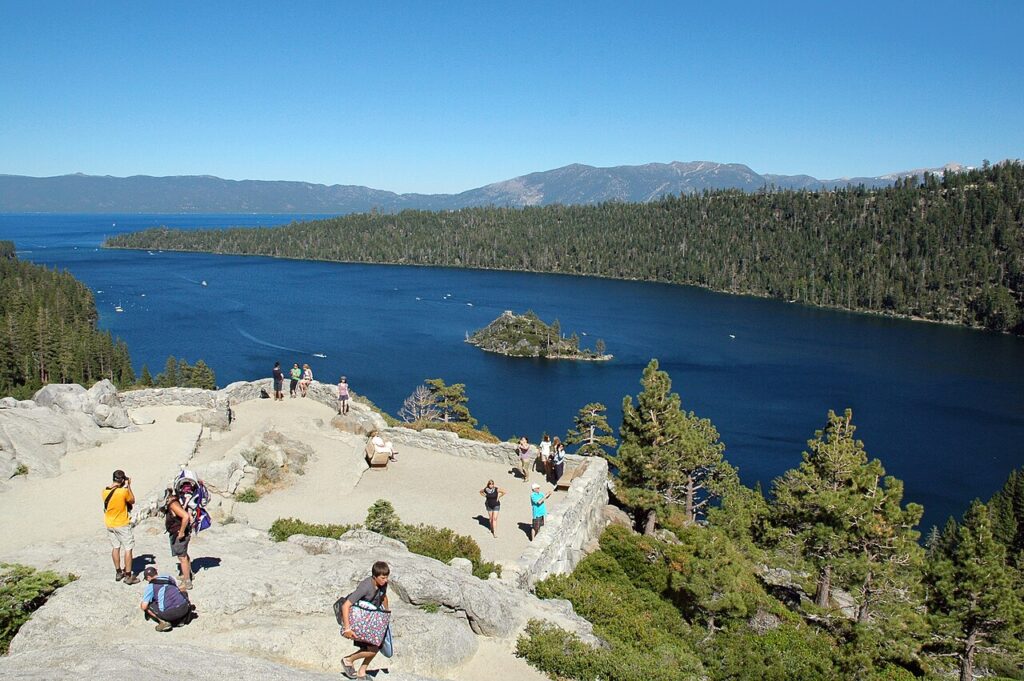
Straddling the California-Nevada border, Lake Tahoe’s crystal-clear waters and surrounding pine forests create an idyllic backdrop for camping adventures. The lake’s D.L. Bliss State Park and Emerald Bay State Park offer some of the most scenic campsites, with breathtaking views of the azure waters against a mountain backdrop.
During summer months, campers can enjoy swimming in the refreshingly cool waters, hiking the numerous trails including portions of the famous Tahoe Rim Trail, or simply relaxing on the sandy beaches. With winter camping options available for the adventurous, Lake Tahoe provides year-round opportunities to connect with nature while enjoying one of America’s deepest and most pristine alpine lakes.
Acadia National Park, Maine
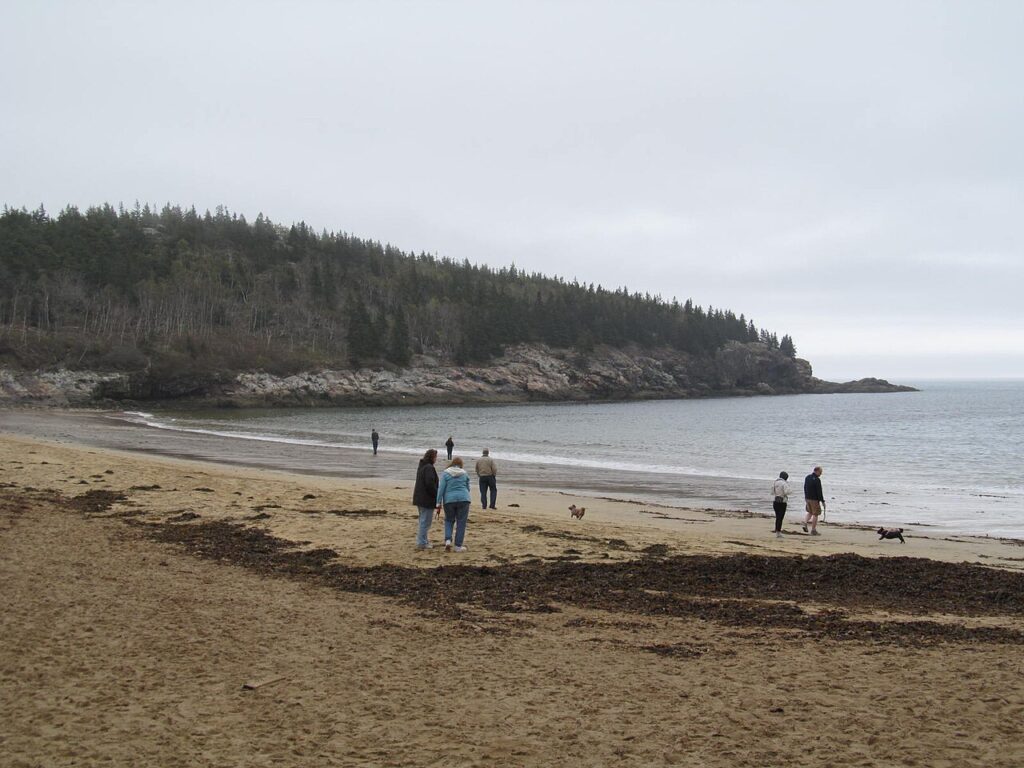
The rugged coastline of Maine’s Acadia National Park features several spectacular freshwater lakes nestled among its granite mountains, creating perfect camping opportunities. Blackwoods and Seawall Campgrounds provide access to both lakeside and oceanside experiences, with Jordan Pond and Echo Lake being particularly popular spots for swimming and paddling.
The park’s unique position allows campers to hike mountain trails in the morning, cool off in a serene lake in the afternoon, and still catch a magnificent Atlantic sunset in the evening. Acadia’s diverse ecosystem supports abundant wildlife, giving campers chances to spot beaver, otters, and various bird species while enjoying the tranquil lake waters surrounded by New England’s famous fall foliage in autumn months.
Crater Lake National Park, Oregon
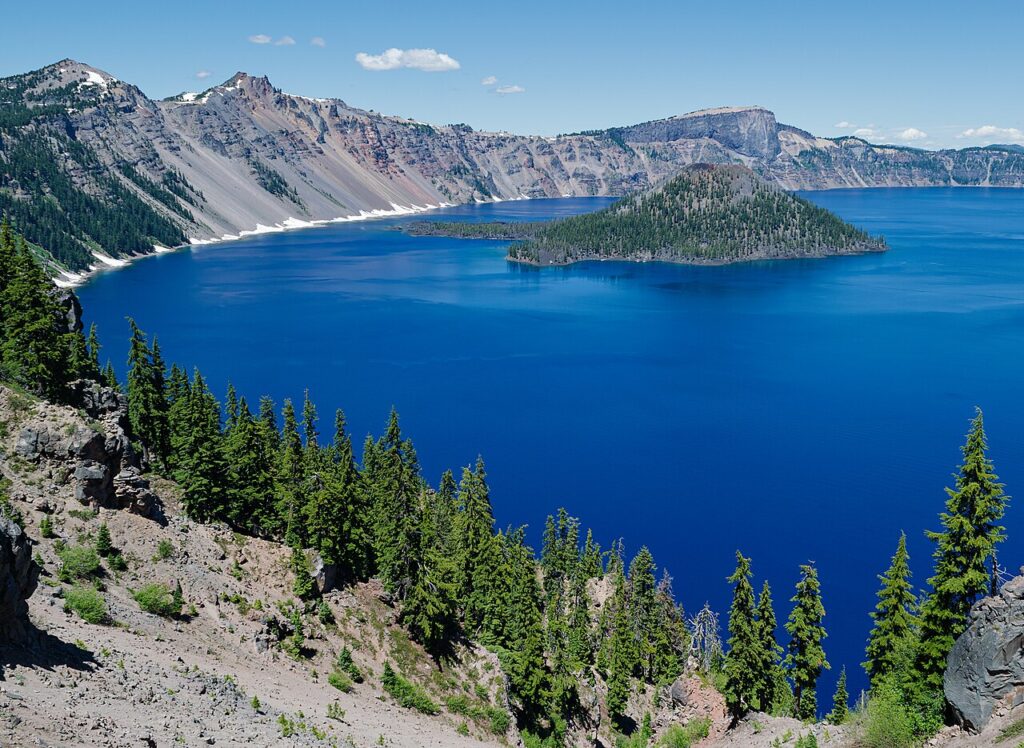
Camping near the deepest lake in the United States offers an otherworldly experience at Crater Lake National Park. The stunningly blue waters formed in a collapsed volcano caldera create a mesmerizing backdrop for Mazama Campground, located just seven miles from the rim. The lake’s remarkable clarity and deep blue color result from being fed entirely by rain and snow, with no rivers flowing in or out, creating a pristine environment unlike any other camping destination.
Summer visitors can enjoy the Crater Lake Rim Drive, offering spectacular viewpoints of this natural wonder, while more adventurous campers can hike down to Cleetwood Cove Trail for a chilly swim in the remarkably clear waters. Stargazing is exceptional here due to minimal light pollution, making nighttime at Crater Lake an unforgettable experience for astronomy enthusiasts.
Lake Superior, Michigan
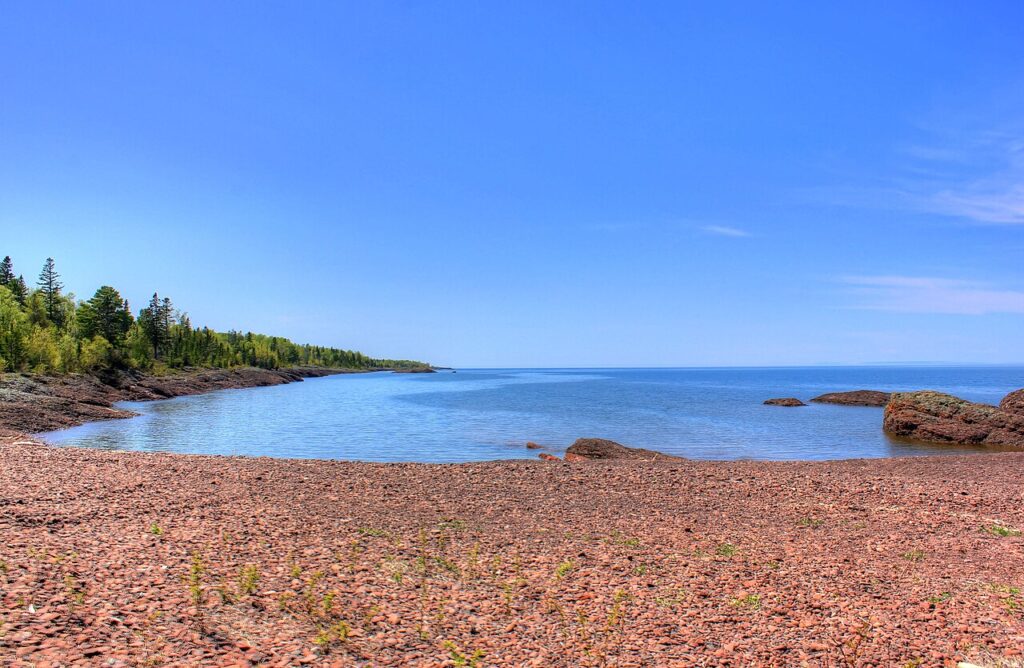
Michigan’s Upper Peninsula offers some of the most stunning lakeside camping along the shores of Lake Superior, the largest freshwater lake in the world by surface area. Pictured Rocks National Lakeshore features dramatic colorful cliffs, sea caves, and natural sandstone formations alongside pristine beaches and crystal-clear waters. Twelvemile Beach Campground sits atop a bluff with panoramic views of the lake, while Hurricane River Campground offers sites within earshot of the gentle waves.
The cold, clear waters of Superior are perfect for brave swimmers during summer months, while the shoreline hiking trails provide opportunities to discover hidden coves and waterfalls tumbling directly into the lake. Fall brings spectacular colors as the surrounding maple forests turn brilliant shades of red and orange, reflecting beautifully on the lake’s surface.
Glacier National Park, Montana
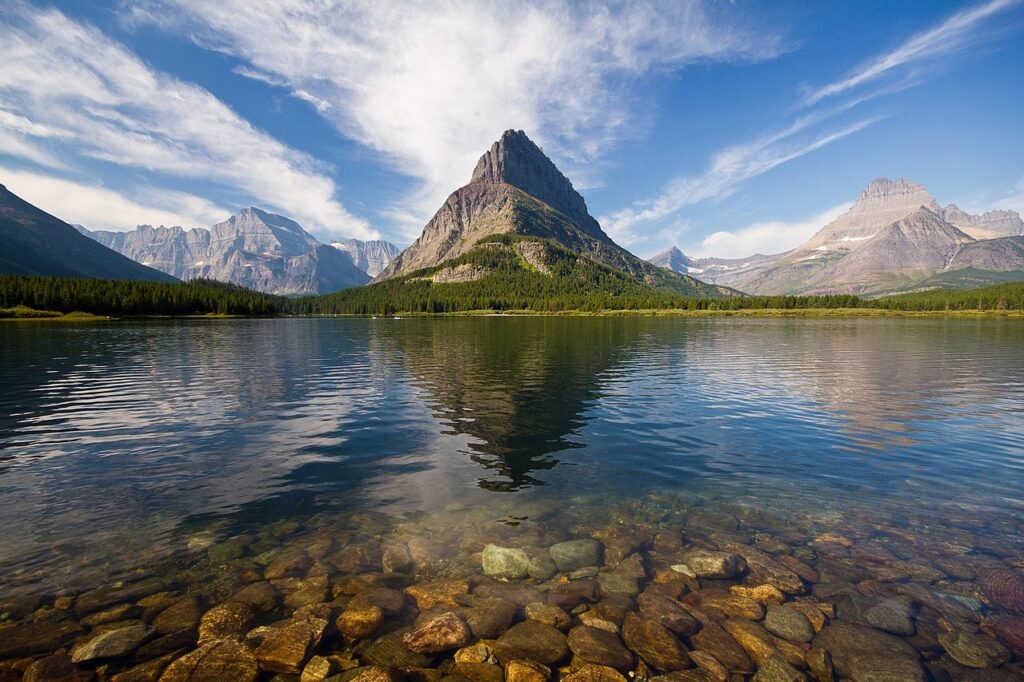
The glacial lakes of Montana’s Glacier National Park offer some of the most dramatic lakeside camping in America, surrounded by towering peaks and abundant wildlife. Many Glacier Campground sits on the shores of Swiftcurrent Lake, providing campers with mirror-like reflections of the surrounding mountains and occasional visits from moose, bear, and mountain goats. The park features over 700 lakes, with Lake McDonald being the largest and most accessible, offering stunning camping at Apgar Campground with views of the glacier-carved mountains reflecting in the crystal waters.
Canoeists and kayakers can explore these pristine lakes while enjoying the silence broken only by the call of loons or the splash of jumping trout. Hikers can access dozens of trails directly from lakeside campgrounds, leading to alpine meadows, additional hidden lakes, and panoramic viewpoints of this crown jewel of the American park system.
Lake Powell, Arizona/Utah
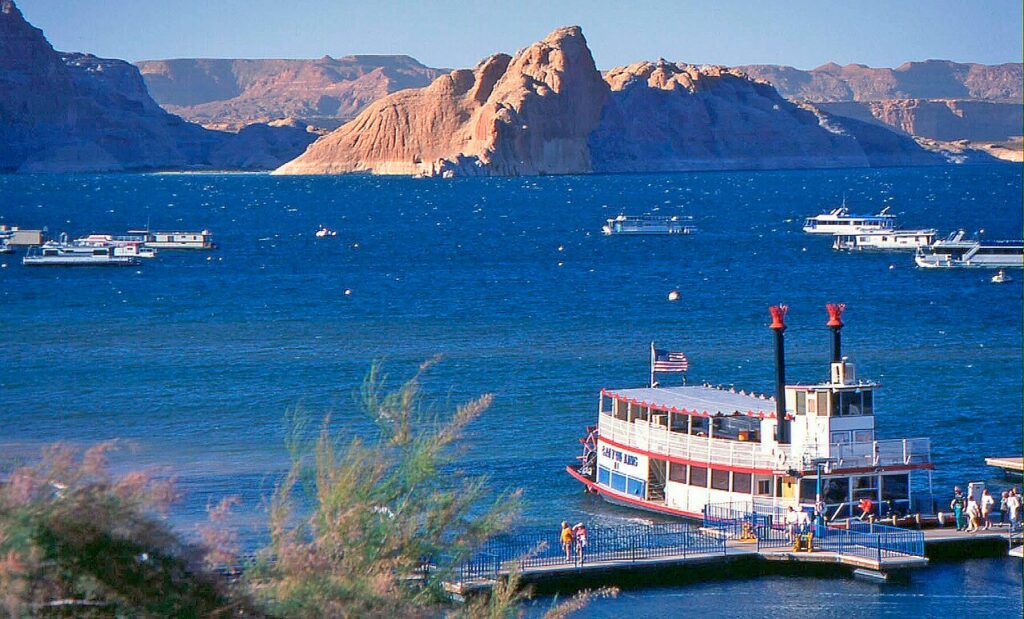
Stretching across the Arizona-Utah border, Lake Powell offers a unique desert lakeside camping experience amid stunning red rock canyons and crystal blue waters. This massive reservoir on the Colorado River features nearly 2,000 miles of shoreline with countless coves and beaches accessible only by boat, creating incredible opportunities for primitive camping in complete solitude. Wahweap and Bullfrog Marina campgrounds provide developed facilities with stunning views of the lake’s sapphire waters contrasting dramatically with the surrounding desert landscape.
Water temperatures reach the mid-80s during summer months, making Lake Powell perfect for swimming, waterskiing, and wakeboarding against the backdrop of towering sandstone formations. The stargazing opportunities are unparalleled due to the remote location and clear desert air, with the Milky Way stretching dramatically across the night sky above the tranquil waters.
Finger Lakes, New York
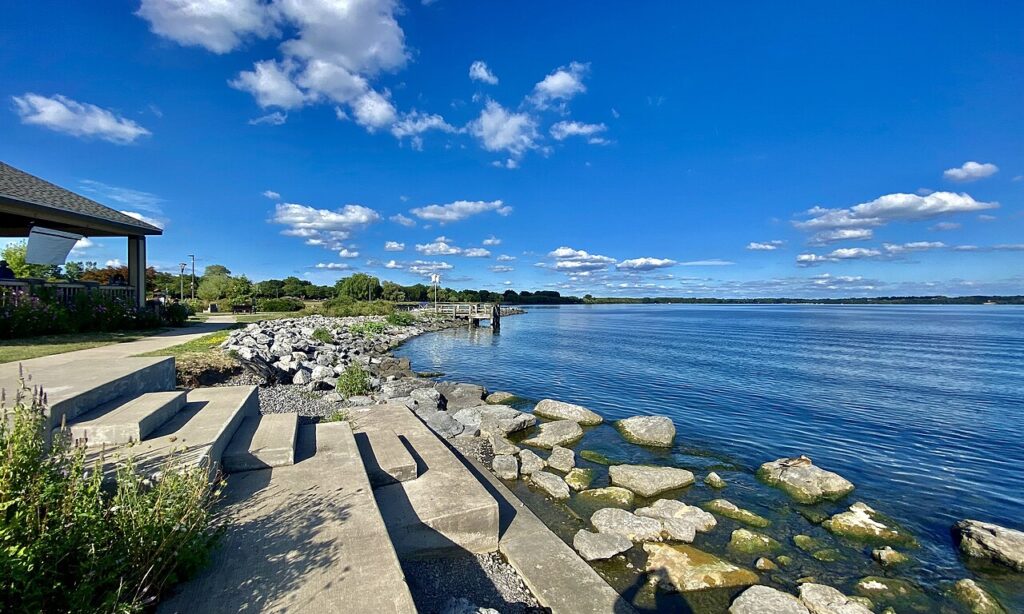
New York’s Finger Lakes region offers a wealth of camping opportunities along its eleven glacially-formed lakes, each with its own distinct character and charm. Watkins Glen State Park provides campsites near the southern tip of Seneca Lake, with easy access to the famous gorge trail featuring 19 waterfalls within a two-mile stretch. Taughannock Falls State Park campground sits along the shores of Cayuga Lake, offering sites with lake views and proximity to one of the highest waterfalls east of the Rocky Mountains.
The region’s moderate summer climate creates perfect conditions for camping, swimming, and boating, while the surrounding wine country provides opportunities for afternoon tastings at dozens of lakeside vineyards. Fall camping is particularly spectacular as the surrounding hardwood forests burst into color, reflecting off the calm lake surfaces and creating postcard-perfect views from lakeside campsites.
Lake Ouachita, Arkansas
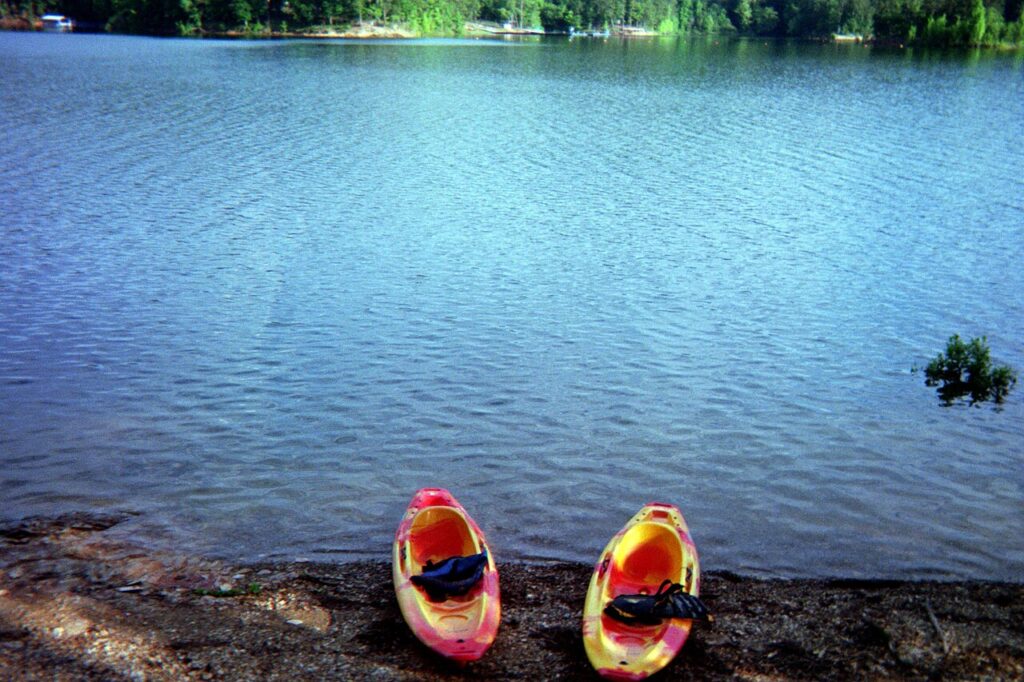
Arkansas’s largest lake offers some of the cleanest, clearest waters in the country, with more than 200 islands dotting its surface and creating endless exploration opportunities for campers. Lake Ouachita State Park features premium campsites along the shoreline, with many offering direct lake access for swimming and fishing right from your tent door. The lake’s designation as a marine sanctuary has helped maintain exceptional water quality, with underwater visibility often reaching 30 feet, making it a favorite for scuba divers exploring the numerous underwater rock formations.
Bird watchers can spot bald eagles, ospreys, and herons while paddling among the islands, many of which offer primitive camping for those seeking true solitude. The surrounding Ouachita National Forest provides additional hiking opportunities through pine and hardwood forests when campers need a break from water activities.
Lake Chelan, Washington
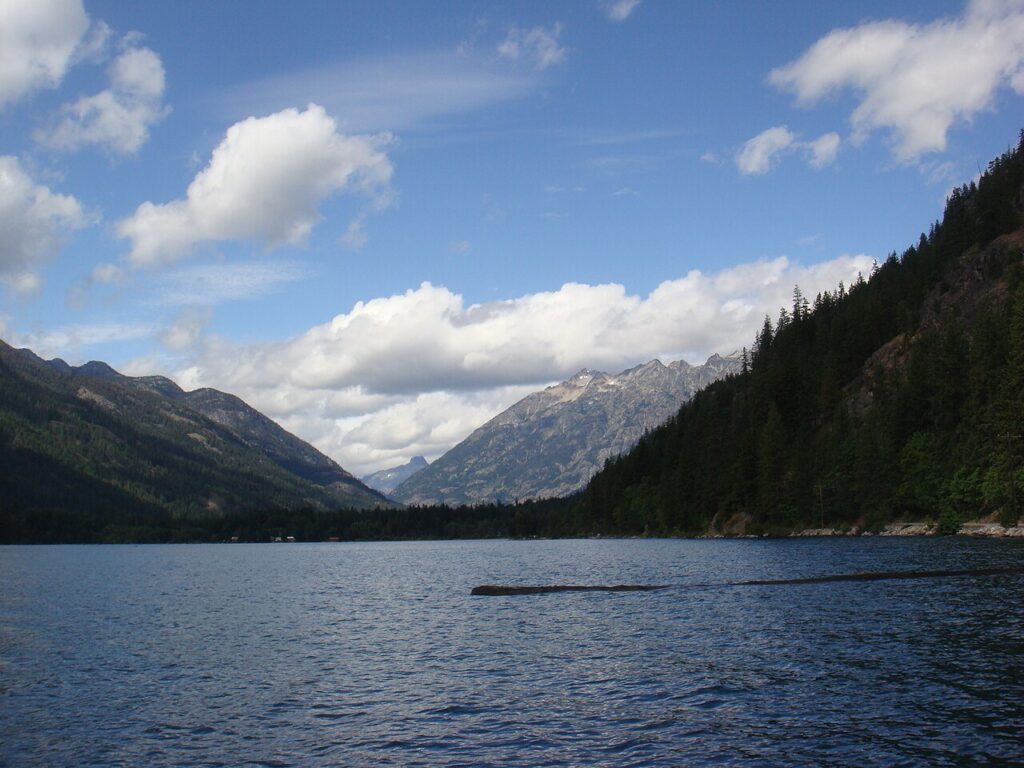
Stretching for over 50 miles through Washington’s North Cascades, Lake Chelan offers diverse camping experiences from developed lakeside resorts to remote wilderness sites accessible only by boat or floatplane. The lake’s clear, blue waters are surrounded by dramatic mountain scenery, with the remote northern section lying within North Cascades National Park. Lake Chelan State Park provides well-maintained campsites along the southeastern shore, with sandy beaches perfect for swimming in the refreshingly cool waters.
For the adventurous, Stehekin campground at the lake’s remote northern end offers a true wilderness experience, accessible only by passenger ferry or hiking trail, where campers can enjoy pristine waters and unparalleled mountain views without crowds. The area’s dry, sunny climate (receiving just 11 inches of annual rainfall) makes it an exceptionally reliable camping destination even in the often-rainy Pacific Northwest.
Voyageurs National Park, Minnesota
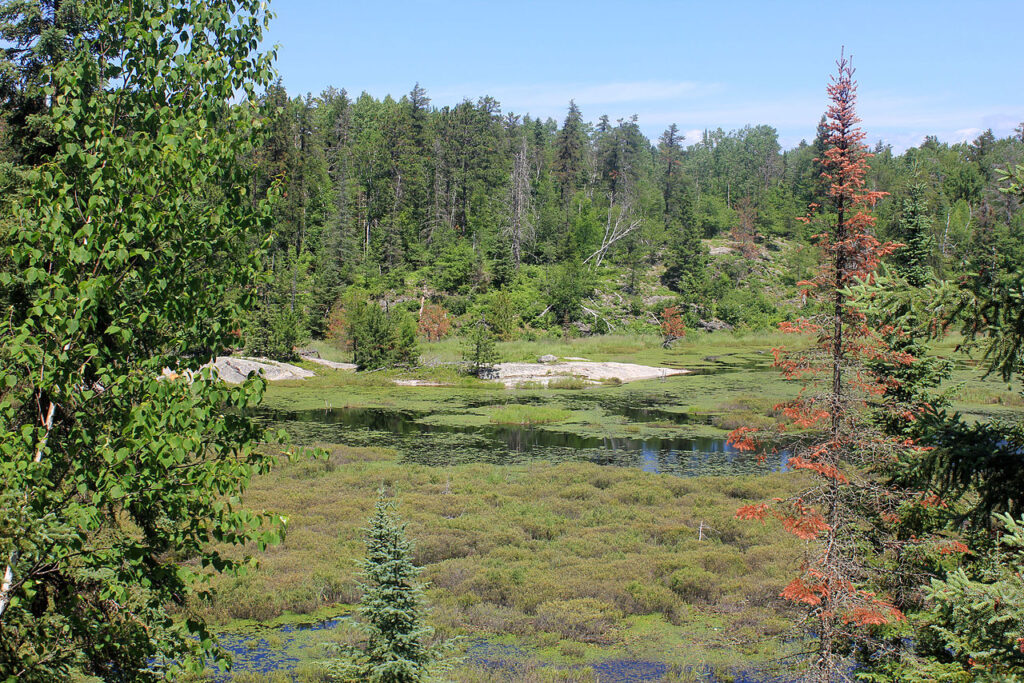
Minnesota’s only national park offers a unique water-based camping experience, with all campsites accessible exclusively by boat across its interconnected lakes and waterways. Situated along the Canadian border, Voyageurs features over 500 islands and 655 miles of undeveloped shoreline spread across Rainy, Kabetogama, Namakan, and Sand Point Lakes. The park’s remote, boat-in campsites provide unparalleled privacy and connection with nature, where loons call across misty morning waters and northern lights often dance in the clear night skies.
Paddlers can explore the same routes used by French-Canadian fur traders centuries ago, while anglers enjoy some of the best walleye and northern pike fishing in the country. Winter transforms the park into an entirely different experience, when frozen lakes become highways for snowmobilers and cross-country skiers accessing remote ice fishing locations and winter camping opportunities.
Lake Cumberland, Kentucky
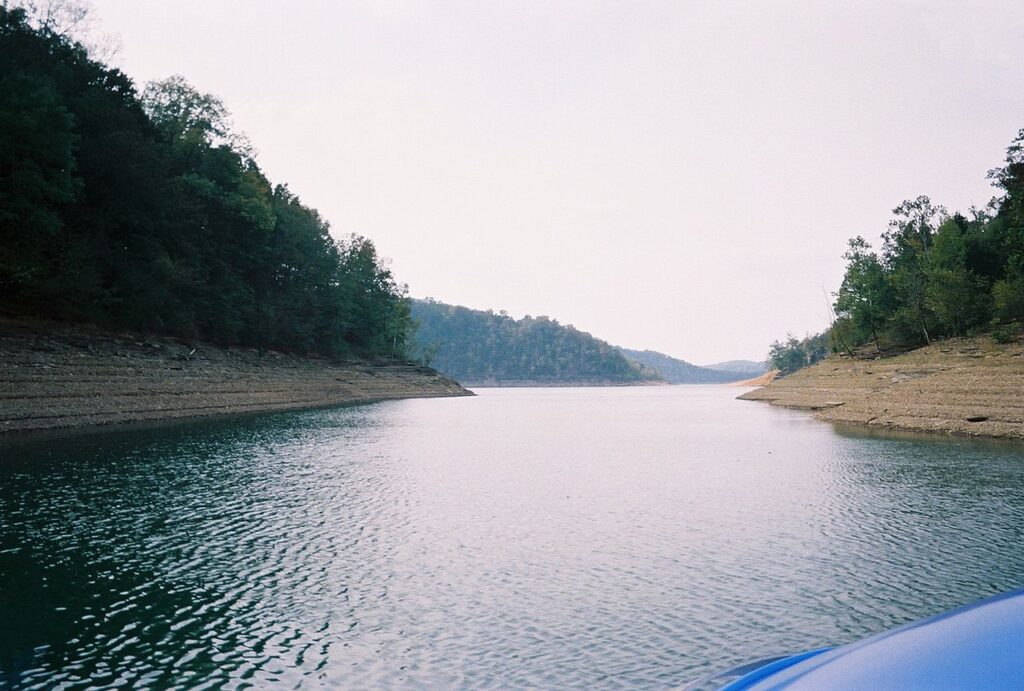
With over 1,200 miles of shoreline, Lake Cumberland in southern Kentucky offers abundant camping opportunities ranging from developed resort-style campgrounds to secluded coves accessible only by boat. The lake’s massive size (over 65,000 acres) and clean, clear waters make it perfect for all water activities, with summer temperatures reaching the mid-80s for comfortable swimming, skiing, and boating.
Lake Cumberland State Resort Park features scenic wooded campsites overlooking the water, while numerous Corps of Engineers campgrounds offer more basic facilities with spectacular waterfront locations. The lake is famous for its striper fishing, with many campgrounds providing fish cleaning stations and boat ramps for anglers looking to catch dinner during their stay. The surrounding Daniel Boone National Forest creates a verdant backdrop for camping adventures, with numerous hiking trails accessible from lakeside campgrounds.
Flathead Lake, Montana
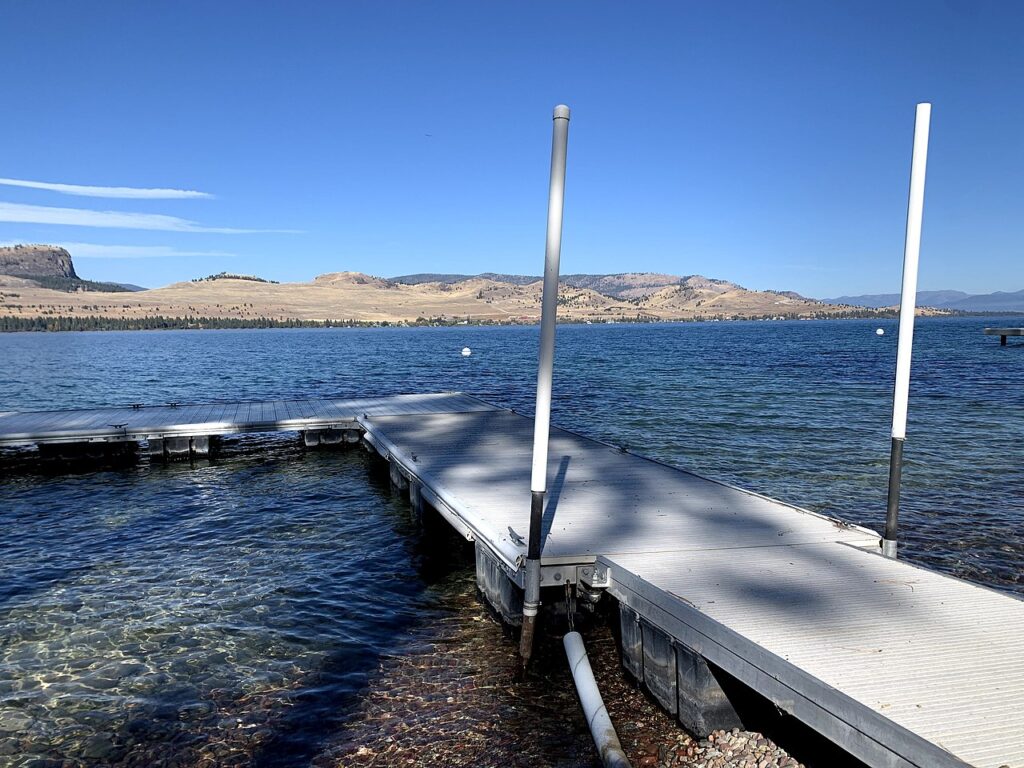
The largest natural freshwater lake west of the Mississippi, Flathead Lake in northwestern Montana offers crystal-clear waters surrounded by mountain vistas and charming lake towns. Flathead Lake State Park encompasses six distinct units around the lake, with Yellow Bay and Big Arm units offering some of the most picturesque camping among ponderosa pines with lake views. The remarkable clarity of the lake, which can exceed 30 feet of visibility, makes it perfect for swimming and underwater exploration, while the surrounding cherry orchards provide sweet treats for campers visiting during the July harvest season.
Wild Horse Island, accessible only by boat, offers day-use opportunities to spot the small herd of wild horses, bighorn sheep, and mule deer that inhabit this unique ecosystem. The lake’s position just south of Glacier National Park makes it an ideal base camp for exploring multiple natural wonders in a single vacation.
Grand Teton National Park, Wyoming
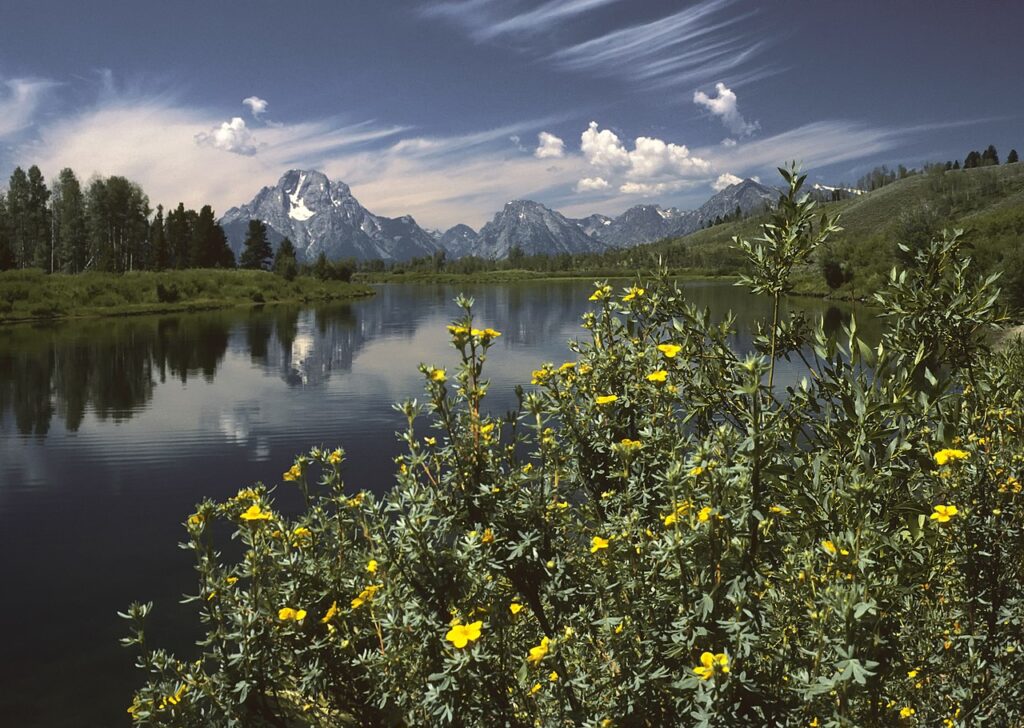
Few camping experiences can match the drama of waking up beside a crystal-clear lake with the jagged Teton Range reflected in its still morning waters. Grand Teton National Park’s Jenny Lake Campground is among the most sought-after sites in the national park system, offering tent-only camping in a pristine setting with easy access to swimming, fishing, and boating on the lake. Colter Bay Campground on Jackson Lake provides additional lakeside options with spectacular mountain views and excellent facilities including boat rentals and ranger programs.
The lakes’ cold, clear waters are perfect for refreshing dips after hiking the park’s extensive trail system, while anglers can target native cutthroat trout against the backdrop of snow-capped peaks. Wildlife viewing opportunities abound, with moose, elk, and beavers frequently spotted along lakeshores during peaceful evening hours.
Lake Santeetlah, North Carolina
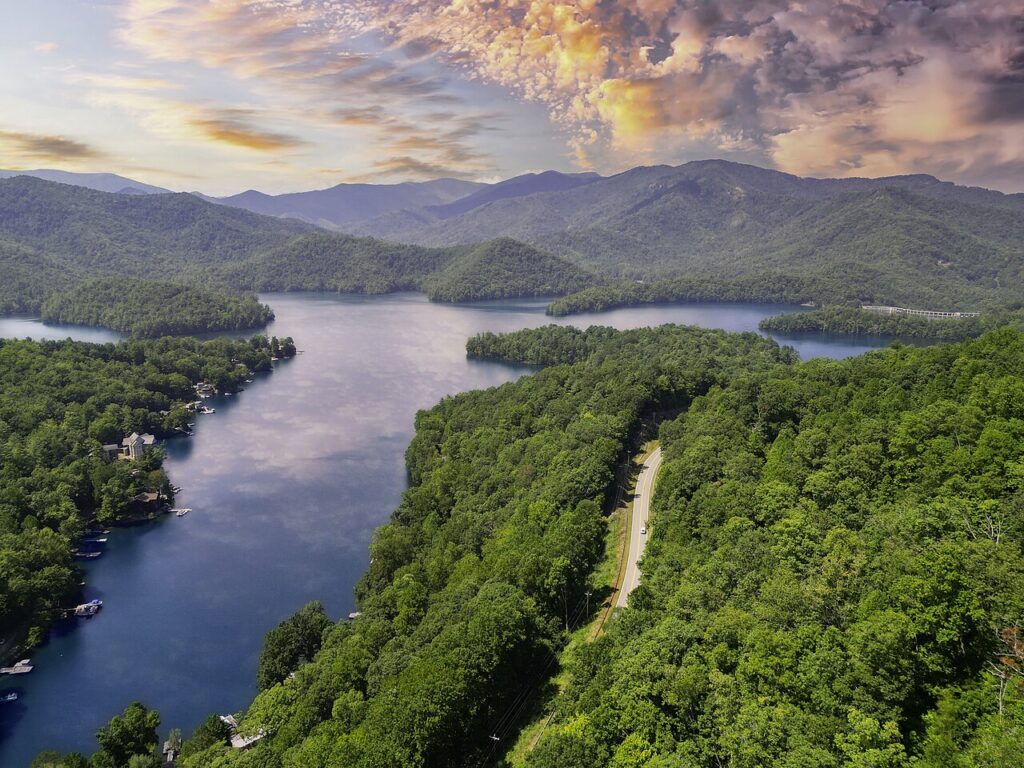
Tucked away in western North Carolina’s Nantahala National Forest, Lake Santeetlah offers a peaceful mountain lake camping experience without the crowds found at more famous destinations. The lake’s 76 miles of largely undeveloped shoreline create numerous quiet coves and inlets, perfect for kayaking, fishing, or simply enjoying the reflection of the surrounding Appalachian Mountains on the clear waters. Cheoah Point Campground provides well-maintained sites with easy lake access, while Joyce Kilmer Memorial Forest nearby offers hikes among some of the last remaining old-growth forest in the eastern United States.
The lake’s moderate elevation (1,940 feet) creates pleasant summer temperatures for camping, with cool mountain evenings perfect for campfires beside the gently lapping waters. Fall transforms the experience entirely as the surrounding hardwood forests explode with color, creating a spectacular display that reflects beautifully on the lake’s surface.
Caddo Lake, Texas/Louisiana
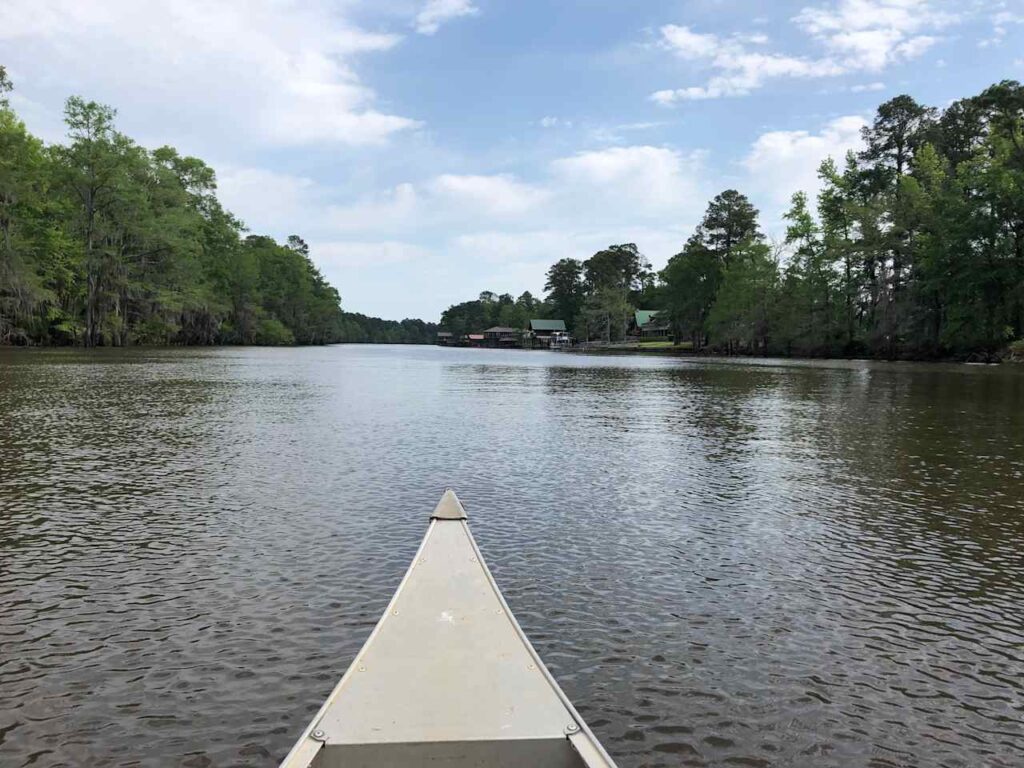
For a completely different lakeside camping experience, Caddo Lake on the Texas-Louisiana border offers a mystical landscape of cypress trees draped in Spanish moss rising from the shallow waters. Caddo Lake State Park in Texas provides camping facilities among towering pines with easy access to the lake’s maze of bayous and sloughs, perfect for exploration by canoe or kayak. Unlike clear mountain lakes, Caddo’s mysterious atmosphere comes from the labyrinth of water passages winding through cypress forests, creating an otherworldly setting especially in early morning mist.
Wildlife enthusiasts can spot alligators, herons, egrets, and countless other species while navigating the 50 miles of paddling trails marked through the lake’s confusing passages. The rich cultural history of the area adds another dimension to camping here, with opportunities to learn about the Caddo Indians who gave the lake its name and the steamboat era when these waters served as an important transportation route.
Conclusion
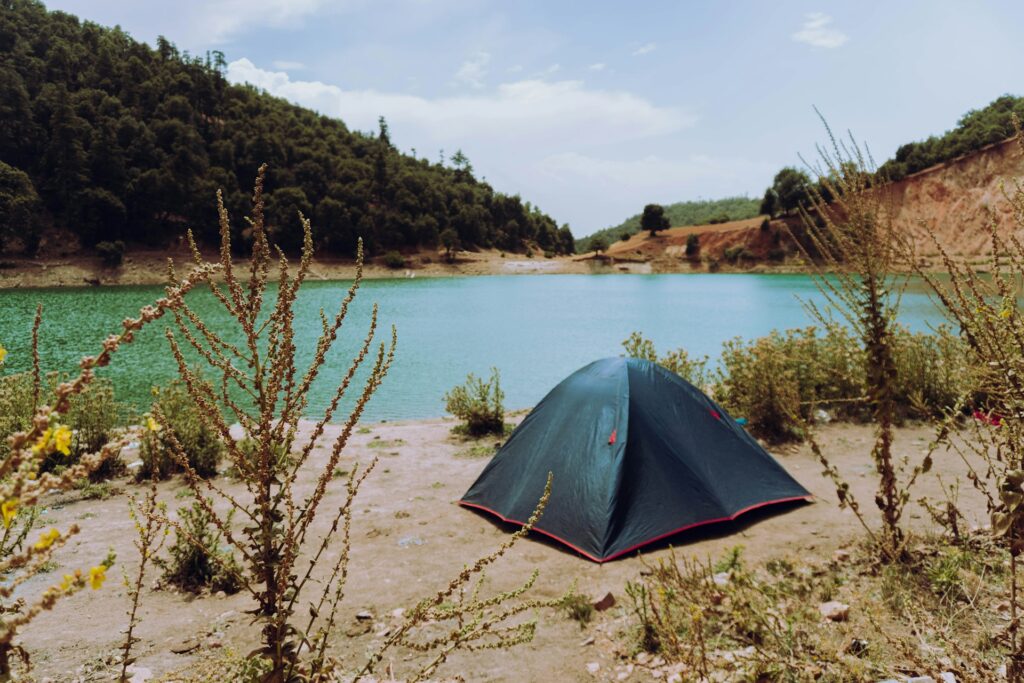
Lakeside camping connects us with two of nature’s most powerful elements: the tranquility of water and the grounding presence of land. From the mystical cypress forests of Caddo Lake to the crystal-clear alpine waters of Crater Lake, America’s diverse lake ecosystems offer something for every outdoor enthusiast. These 15 destinations represent just a sample of the country’s incredible waterfront camping opportunities, each with its own unique character and charm.
Whether you’re seeking adventure, relaxation, wildlife viewing, or simply an escape from everyday life, lakeside camping provides an accessible way to immerse yourself in natural beauty while creating lasting memories. As you plan your next outdoor getaway, consider the special magic that comes from falling asleep to the gentle rhythm of waves and waking to mist rising off still morning waters—experiences that remind us of our deep connection to the natural world.

